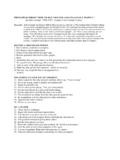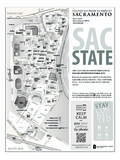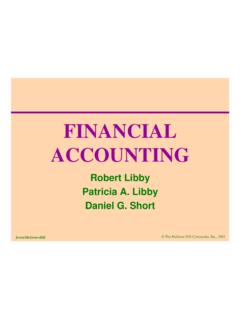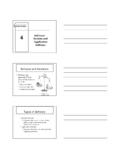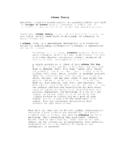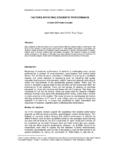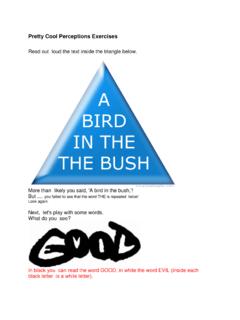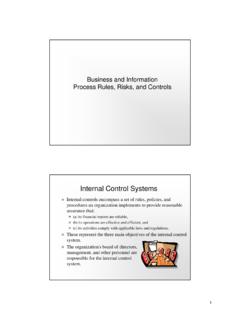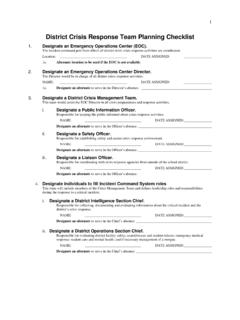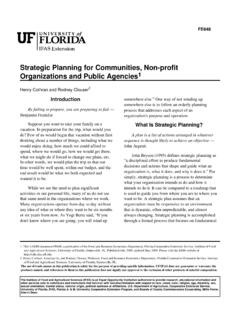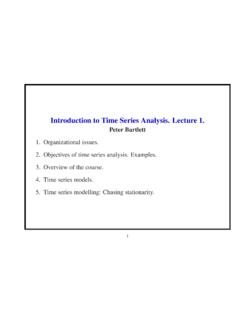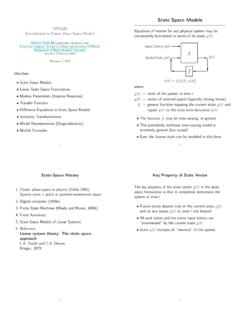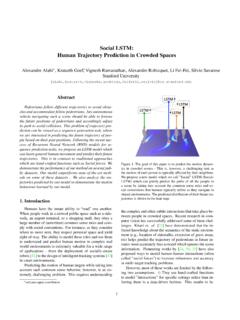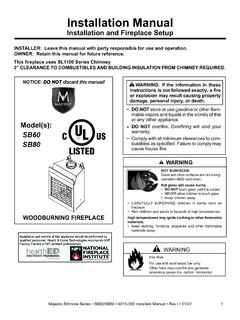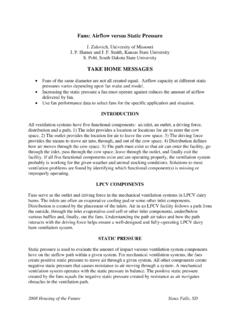Transcription of reid suppC 001-020hr - California State University, …
1 9/4/09 11:17 AM Page C1. C. SUPPLEMENT. Waiting Line Models Before studying this supplement you should know or, if necessary, review 1. Competitive advantages, Chapter 2. 2. Priority rules, Chapter 16. LEARNING OBJECTIVES. After completing this supplement you should be able to 1 Describe the elements of a waiting line problem. 2 Use waiting line models to estimate system performance. 3 Use waiting line models to make managerial decisions. SUPPLEMENT OUTLINE. Elements of Waiting Lines C2 Changing Operational Characteristics C13. Waiting Line Performance Measures C7 Larger-Scale Waiting Line Systems C14. Single-Server Waiting Line model C7 Waiting Line Models within OM: How It Multiserver Waiting Line model C9 All Fits Together C15. WHAT'S IN OM FOR ME? ACC FIN MKT OM HRM MIS. C1. 9/4/09 11:17 AM Page C2. C2 SUPPLEMENT C WAITING LINE MODELS. aiting in lines is part of everyday life. Some estimates State that Americans spend W 37 billion hours per year waiting in lines.
2 Whether it is waiting in line at a gro- cery store to buy deli items (by taking a number) or checking out at the cash registers (finding the quickest line), waiting in line at the bank for a teller, or waiting at an amusement park to go on the newest ride, we spend a lot of time waiting. We wait in lines at the movies, campus dining rooms, the registrar's office for class registration, at the Division of Motor Vehicles, and even at the end of the school term to sell books back. Think about the lines you have waited in just during the past week. How long you wait in line depends on a number of factors. Your wait is a result of the number of people served before you, the number of servers working, and the amount of time it takes to serve each individual customer. Waiting line system Wait time is affected by the design of the waiting line system. A waiting line sys- Includes the customer tem (or queuing system) is defined by two elements: the population source of its population source as well as the process or service system.
3 Customers and the process or service system itself. In this supplement we examine the Queuing system elements of waiting line systems and appropriate performance measures. Perfor- Another name to define a mance characteristics are calculated for different waiting line systems. We conclude waiting line. with descriptions of managerial decisions related to waiting line system design and performance. ELEMENTS OF WAITING LINES. Any time there is more customer demand for a service than can be provided, a waiting line occurs. Customers can be either humans or inanimate objects. Examples of ob- jects that must wait in lines include a machine waiting for repair, a customer order waiting to be processed, subassemblies in a manufacturing plant (that is, work-in- process inventory), electronic messages on the Internet, and ships or railcars waiting for unloading. In a waiting line system, managers must decide what level of service to offer.
4 A. low level of service may be inexpensive, at least in the short run, but may incur high costs of customer dissatisfaction, such as lost future business and actual pro- cessing costs of complaints. A high level of service will cost more to provide and will result in lower dissatisfaction costs. Because of this trade-off, management must consider what is the optimal level of service to provide. This is illustrated in Figure C-1. 9/4/09 11:17 AM Page C3. ELEMENTS OF WAITING LINES C3. FIGURE C-1. Waiting cost and service level trade-off Fast-food restaurants illustrate LINKS TO PRACTICE. the transient nature of waiting line systems. Waiting lines occur Waiting for Fast Food at a fast-food restaurant drive- Kristin Sladen/The Image Works through during peak meal times each day. There is a temporary surge in demand that cannot be quickly handled with the avail- able capacity. In an effort to speed up delivery, some restau- rants use an extra window the first window for paying and the second window for picking up the food.
5 At other times of the day, the restaurant uses a single window and may have no waiting line at the drive-through window. The challenge is designing service systems with adequate but not excessive amounts of capacity. A fast-food restaurant experiences variable demand and variable service times. The restaurant cannot be sure how much customer demand there will be, and it does not know exactly what each customer will order each order can be unique and require a different service time. It is important to understand the different ele- ments of a waiting line system. These elements include the customer population source, the service system, the arrival and service patterns, and the priorities used for controlling the line. Let's first look at the primary input into the waiting line system: the customers. Finite customer The Customer Population population The customer population can be considered to be finite or infinite. When potential The number of potential new customers is affected by the new customers for the waiting line system are affected by the number of customers al- number of customers already ready in the system, the customer population is finite.
6 For example, if you are in a in the system. 9/4/09 11:17 AM Page C4. C4 SUPPLEMENT C WAITING LINE MODELS. class with nine other students, the total customer population for meeting with the professor during office hours is ten students. As the number of students waiting to meet with the professor increases, the population of possible new customers de- creases. There is a finite limit as to how large the waiting line can ever be. When the number of customers waiting in line does not significantly affect the rate at which the population generates new customers, the customer population is consid- Infinite customer ered infinite. For example, if you are taking a class with 500 other students (a rela- population tively large population) and the probability of all the students trying to meet with the The number of potential new professor at the same time is very low, then the number of students in line does not customers is not affected by significantly affect the population's ability to generate new customers.
7 The number of customers already in the system. In addition to waiting, a customer has other possible actions. For example, a cus- tomer may balk, renege, or jockey. Balking occurs when the customer decides not to Balking The customer decides not to enter the waiting line. For example, you see that there are already 12 students waiting enter the waiting line. to meet with your professor, so you choose to come back later. Reneging occurs when the customer enters the waiting line but leaves before being serviced. For example, you Reneging The customer enters the line enter the line waiting to meet with your professor, but after waiting 15 minutes and but decides to exit before seeing little progress, you decide to leave. Jockeying occurs when a customer changes being served. from one line to another, hoping to reduce the waiting time. A good example of this is Jockeying picking a line at the grocery store and changing to another line in the hope of being The customer enters one served quicker.
8 Line and then switches to a The models used in this supplement assume that customers are patient; they do not different line in an effort to balk, renege, or jockey; and the customers come from an infinite population. The reduce the waiting time. mathematical formulas become more complex for systems in which customer popula- tion must be considered finite and when customers balk, renege, or jockey. The Service System The service system is characterized by the number of waiting lines, the number of servers, the arrangement of the servers, the arrival and service patterns, and the ser- vice priority rules. The Number of Waiting Lines Waiting line systems can have single or multiple lines. Banks often have a single line for customers. Customers wait in line until a teller is free and then proceed to that teller's position. Other examples of single-line systems include airline counters, rental car counters, restaurants, amusement park attractions, and call centers.
9 The advantage of using a single line when multiple servers are avail- able is the customer's perception of fairness in terms of equitable waits. That is, the customer is not penalized by picking the slow line but is served in a true first-come, first-served fashion. The single-line approach eliminates jockeying behavior. Finally, a single-line, multiple-server system has better performance in terms of waiting times than the same system with a line for each server. The multiple-line configuration is appropriate when specialized servers are used or when space considerations make a single line inconvenient. For example, in a grocery store some registers are express lanes for customers with a small number of items. Using express lines reduces the waiting time for customers making smaller purchases. Examples of single- and multiple-line systems are shown in Figure C-2. The Number of Servers System serving capacity is a function of the number of ser- vice facilities and server proficiency.
10 In waiting line systems, the terms server and channel are used interchangeably. It is assumed that a server or channel can serve one 9/4/09 11:17 AM Page C5. ELEMENTS OF WAITING LINES C5. FIGURE C-2. Examples of waiting line systems customer at a time. Waiting line systems are either single server (single channel). or multiserver (multichannel). Single-server examples include small retail stores with a single checkout counter, a theater with a single person selling tickets and controlling admission into the show, or a ballroom with a single person controlling admission. Multiserver systems have parallel service providers offering the same service. Multiserver examples include grocery stores (multiple cashiers), drive-through banks (multiple drive-through windows), and gas stations (multiple gas pumps). The Arrangement of the Servers Services require a single activity or a series of ac- tivities and are identified by the term phase.
